October 2014
2001+2002 Triumph Sprint ST 955
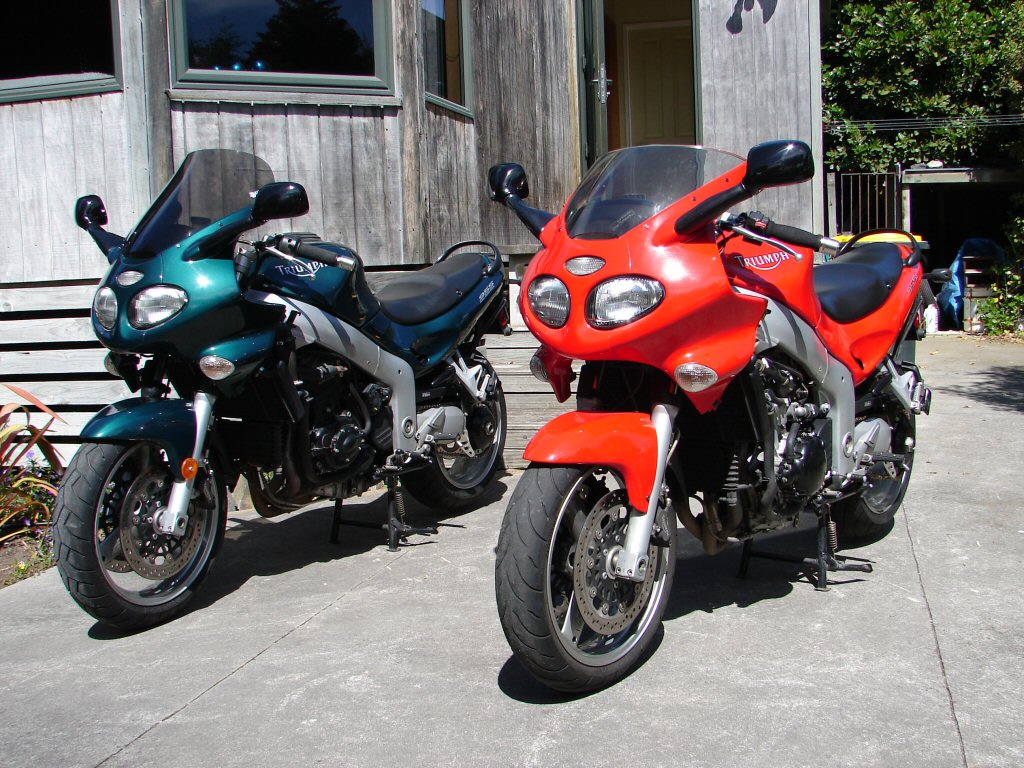
Freshly returned from the USA where they were purchased cheaply from private sellers and used to great effect, this trio of 955 Sprint ST's were only afforded the most basic of maintenance during the tour, mostly due to lack of time and tools with which to tackle the sort of things we would normally check on a recently acquired used machine.
There had been a few necessary repairs to levers and 'bars, plus changings of fluids, filters and tyres, but that was all we managed. Fortunately it was also all that was required, and all 5 of this model plus 3 of the 1050 version behaved in an exemplary fashion.
As most of us had never sampled any of the more modern triples that in itself was a wonderful thing, and we were feeling pretty happy with things when pictured during the event here.
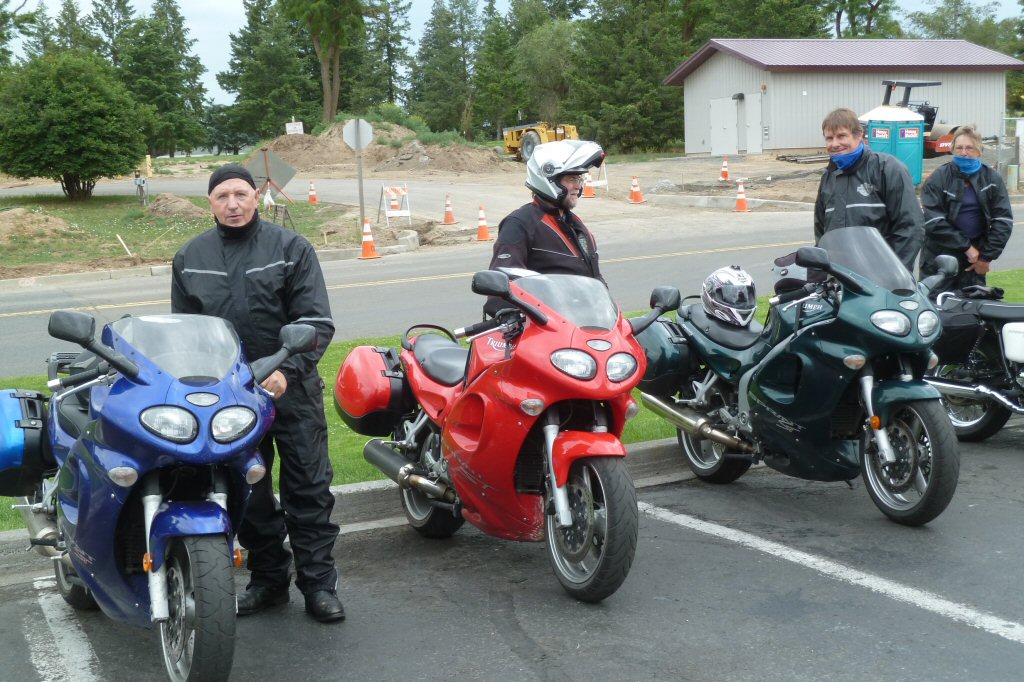
Initially 3 bikes came to stay, my green one, one red belonging to a Perth resident but which would reside in NZ, plus another red which was waiting for it's local compliance before being transported to Blenheim.
While all the 955's were virtually identical there were minor variations such as touring screens, aftermarket seats, and all but one came with their originally optional hard luggage which had made life on the road so much easier in the USA for us.
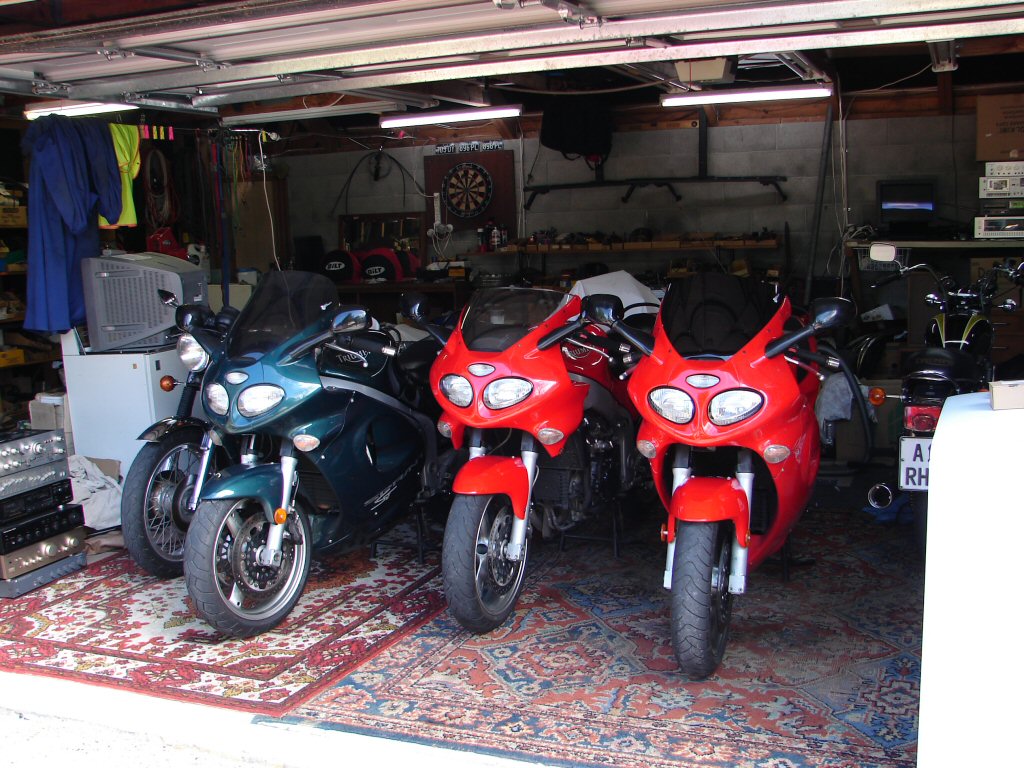
One problem which had occurred with a red bike was a loss of starter function. Initially it was intermittent and our progress was not delayed, but it began to get worse and we spent a little time at one of the USA bikers garages, where we were afforded the generous use of tools and equipment while troubleshooting it. It appeared that there was a failing wire inside a small loom that went to the left side switch cluster, which effected both the starter button and the horn. I bypassed the problem by placing a temporary wire bridge at a conveniently placed connector back where this loom joined the main one. This meant that the bike could be started in gear and without the clutch being operated, so the rider was given the responsibility of managing that situation - which he did.
With the bodywork removed the loom in question was readily accessible, so I slit open the covering and immediately found the problem, which I would describe as a problem waiting to happen. A crimp connection had been made within the loom joining two wires to one, and as any joint which has the bare wires flexing against a solid termination will inevitably lead to the wire breaking - it had. Being a handlebar loom pretty much guarantees that this will happen given time due to the constant movement. The repair was made better than original by using heat shrink sleeving which extended beyond the joint so that the wire will simply flex where it's outer insulation is intact.
Another red bike suffered a similar failed starter breakdown several years later. When phoned I asked the rider if the horn had also stopped working. Yes. Ah - we know what the problem is then..!
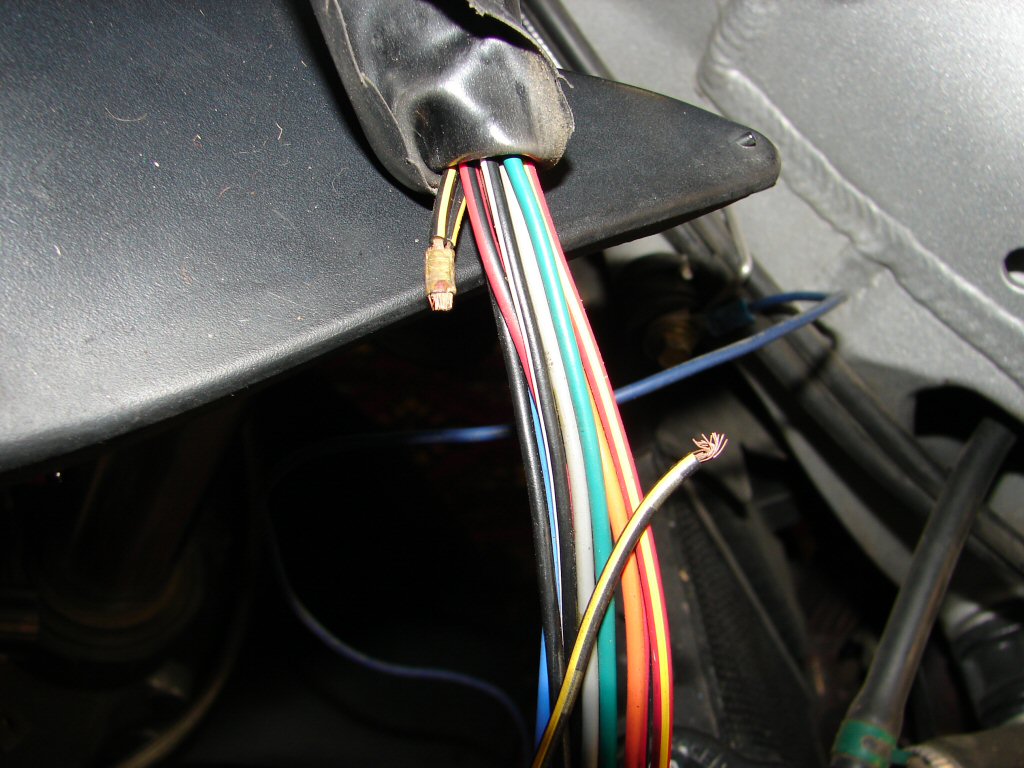
Another job was to strip the front forks and clean and refill the fork oil. The old stuff was obviously the original and was badly contaminated and smelled rotten. This bike also got a new steering head bearing as some play had been evident in the fork operation.
Disc pads were also replaced where necessary, but still 90% of the work would be classed as routine maintenance.
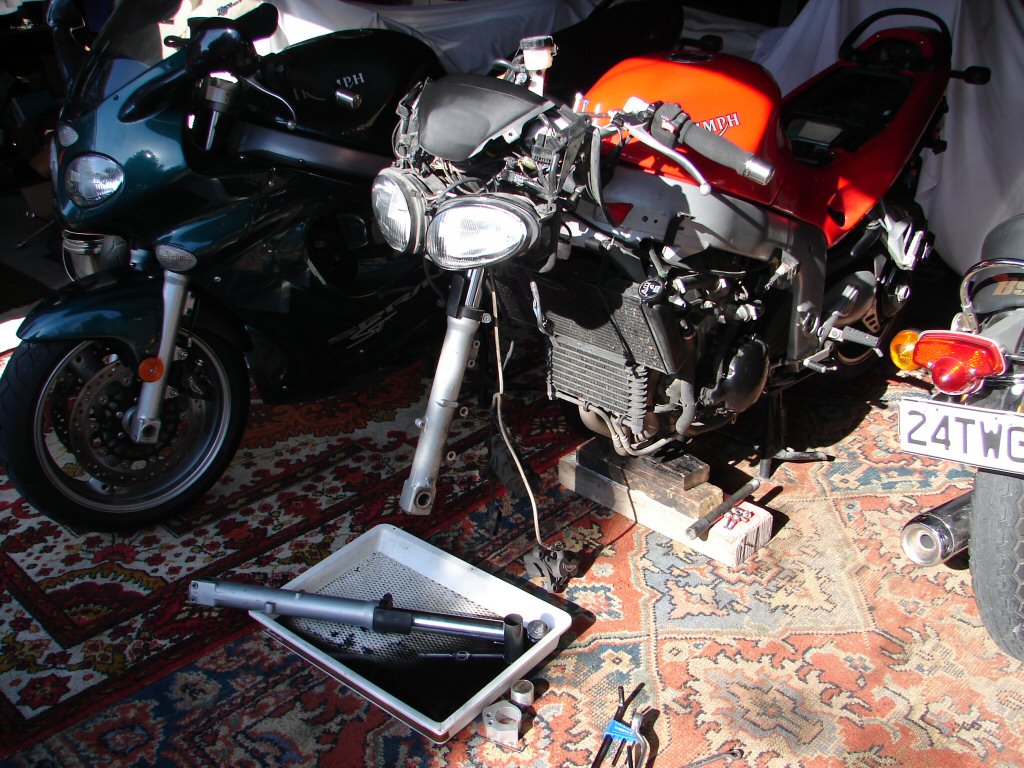
A new drive chain was fitted to this one along with the guide that attaches to the top of the single-sided swingarm. As the swingarm runs virtually horizontal, the chain runs along the top surface, and a rubber guide is fitted there to prevent wear to either chain or swingarm. Parts were locally available and reasonably priced by todays reckoning. The design of the swingarm made removing rear wheels easy for puncture repair or tyre replacement as the wheel is held only by a large nut to the hub and pulls off the right side. Muffler must be removed and pannier brackets loosened, but they were easily done.
Rear brake is most effectively bled if removed from its mounting and held above the run of the fluid line, which is normally along the top of the chainguard.
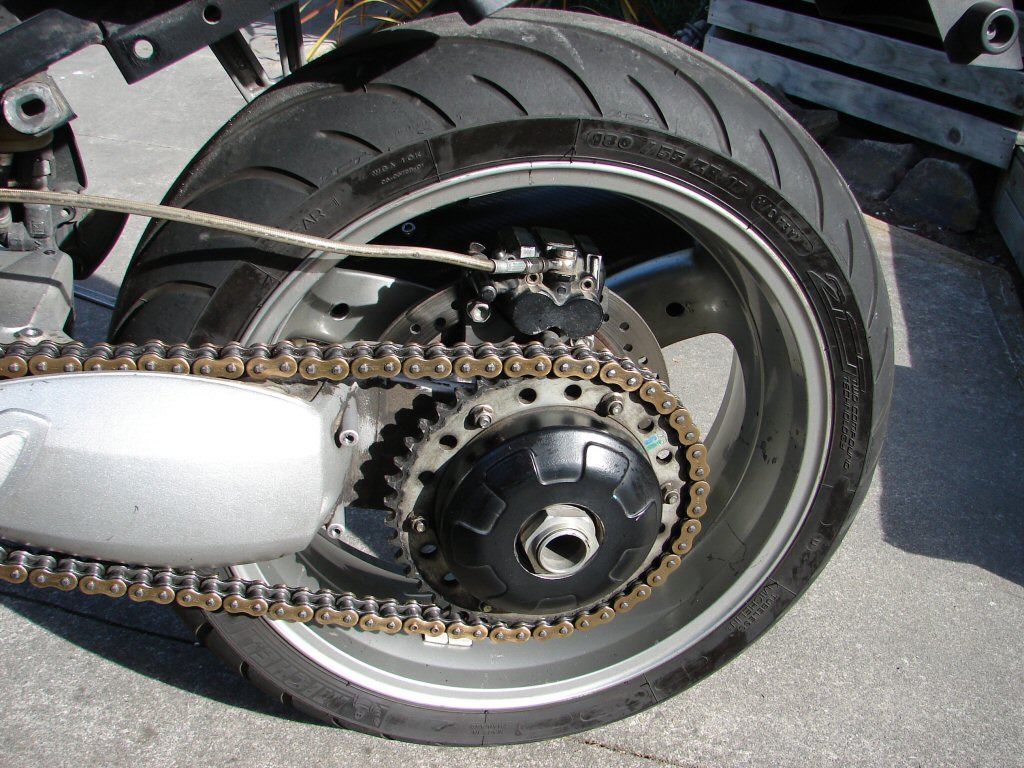
With rear bodywork removed as well the coolant was drained from this one and the reservoir tank flushed out. Often different types of coolant get added by different owners or mechanics, so a flush out and refill with all of one type can avoid any chemical reaction problems inside the thin alloy cases. Corrosion would be a real problem.
Everything is very accessible with the panels off, and a few other niceties like synchronising the throttles were done while the thing was naked.
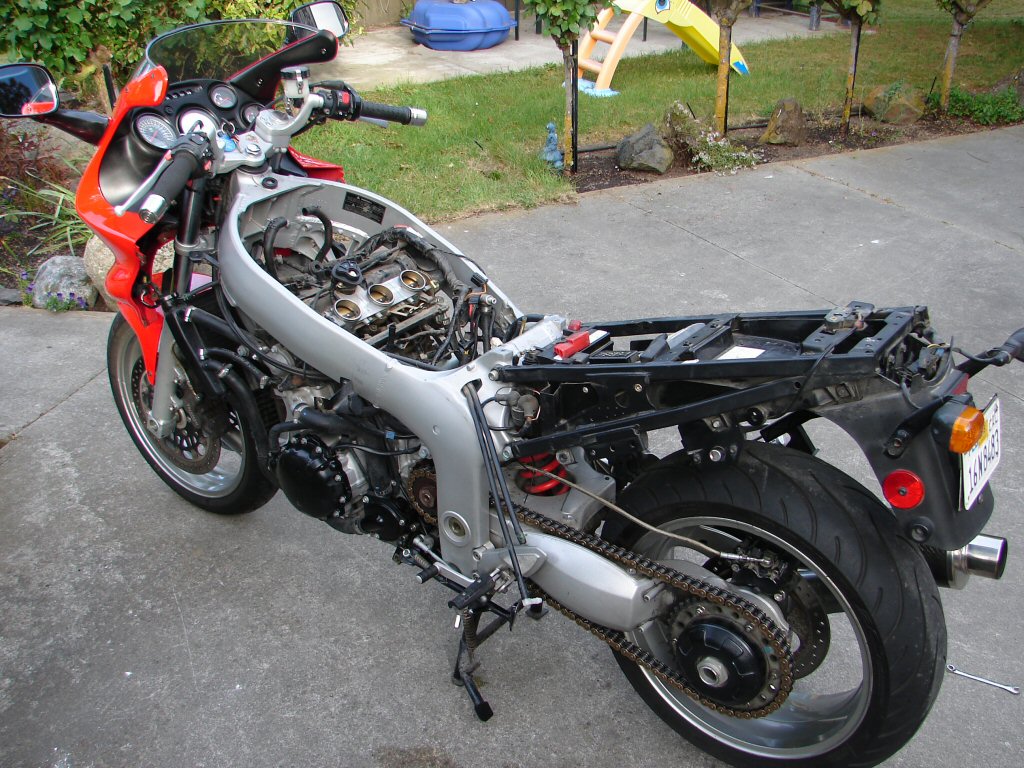
Many of the same processes were repeated on some of the other bikes as well, so everything was up to date as far as the maintenance schedule was concerned - only further use would determine what other matters may present themselves long term.
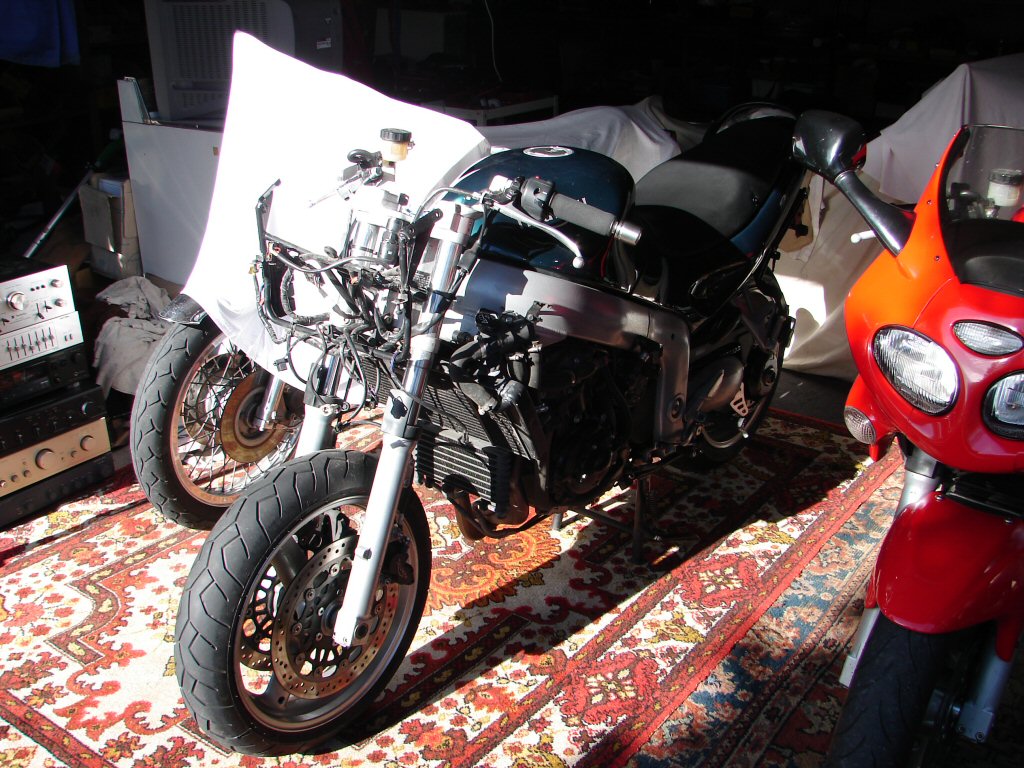
Something did in short time, although it could only be described as a real fluke. One bike suffered an ignition failure on a day outing, and was recovered without drama. When I went looking for the cause I was rather amazed at what had taken place. A vital wire had pulled completely out of the back of the ignition switch, which meant it was equally easy to solder it back in - given that the ignition switch had been removed during the faultfinding process.
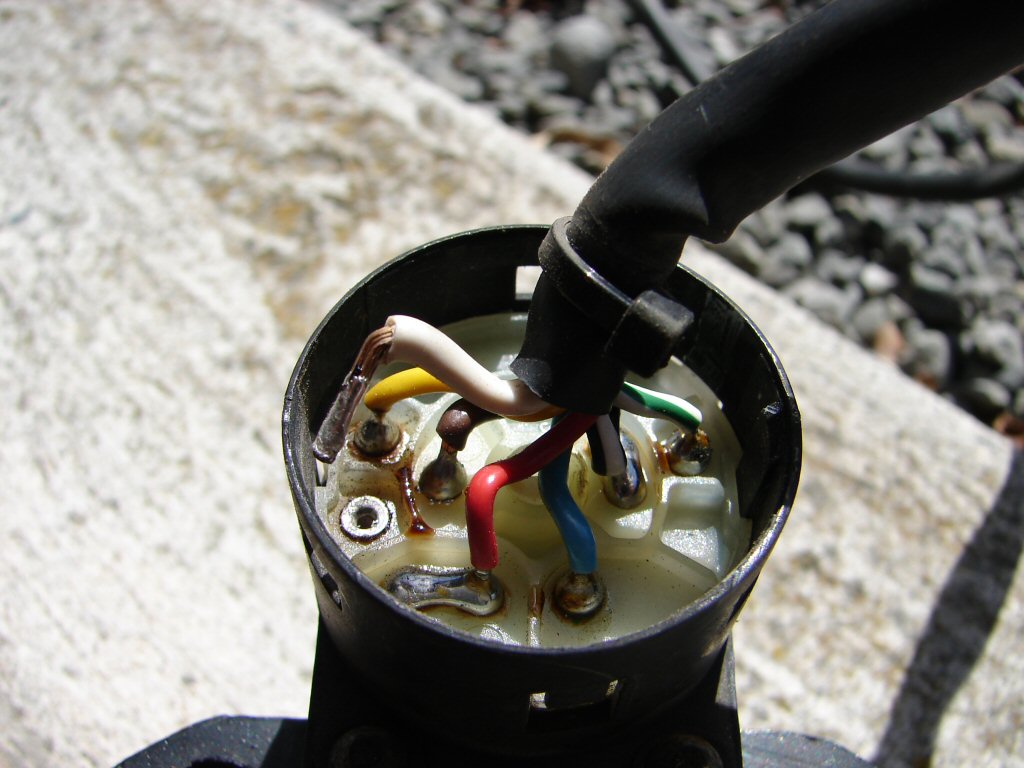
But here is the amazing bit. During the first week in America the ignition switch became extremely loose on this same bike. One fixing screw had vanished and the other was in the process of doing the same, which was extremely fortunate as said screws are designed in such a way that the heads snap off during fitting - just like car ignition switches/steering locks do. If they had not already been missing/loose it is likely that I could not have effected a repair with the meagre tools we had. Besides this, when I obtained two new screws from a Triumph Dealer I elected to leave the heads intact, so that they would be easy to remove in future should the need arise. Well it now had, so all round it worked out a treat. Of course - this failure could have happened at any time during our 10,000 mile circumnavigation of the USA, so once again - most fortunate for all concerned that it had waited until now. Especially for me.
The Sprints continue to give sterling service, and several have exceeded their American mileage here in NZ. There have been no further breakdowns since those described, and the blend of effortless performance and great luggage capacity have made them a joy to tour on, with 3 recently attending the 2019 Burt Munro rally in Invercargill.
Seen here during an overnight stop at Wanaka they now sport their NZ plates, and the compliance process was managed with no drama. Lower body panels have been left off over the summer months as it allows more heat to escape without heating one's legs.
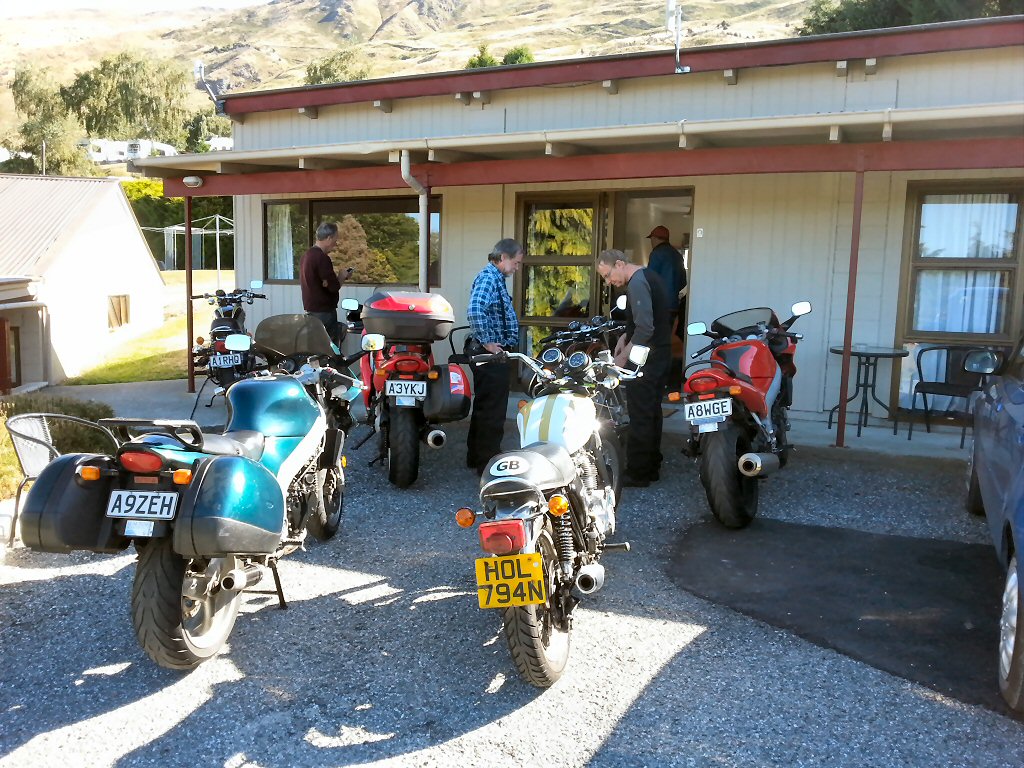
Auspiciously, as I write this there is another Sprint in my shed. The blue one has sat unused since arriving in NZ after the 2014 American tour, and recently I was asked to comply it and sell it for the owner. It required quite a lot of cleaning after which it flew through the compliance mechanical check without a hitch, although one missing piece of paper in the form of the Californian title has stalled proceedings until a replacement arrives from San Francisco.
Still a pretty bike.
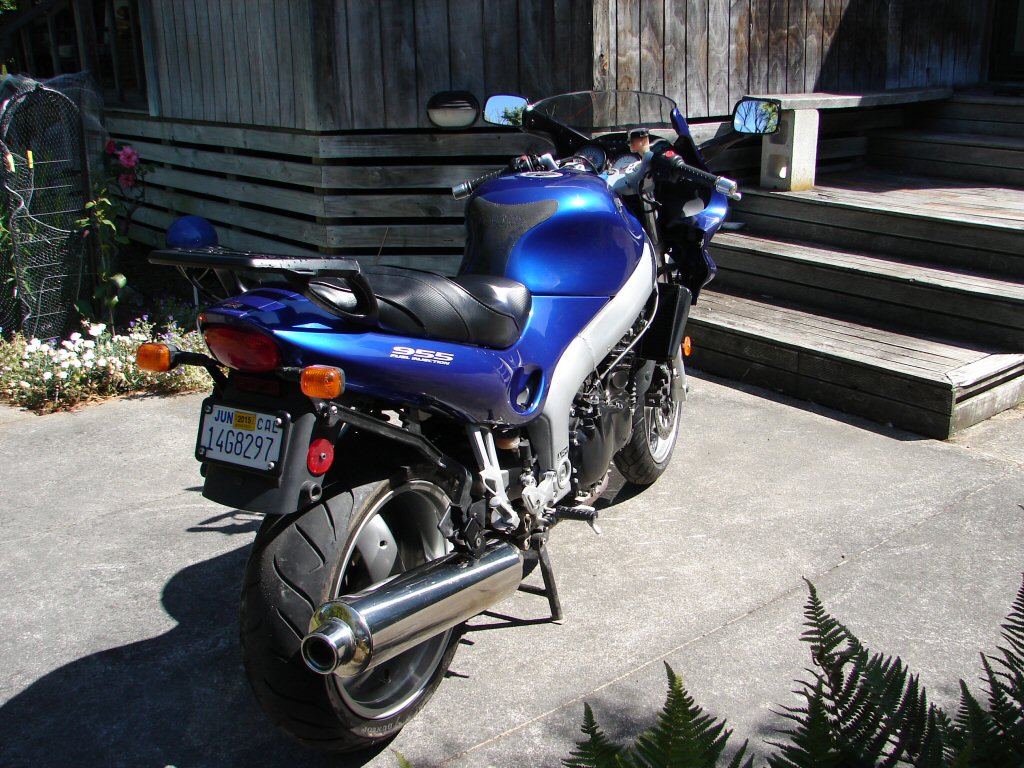
During the planning of the America tour I researched a number of potential bikes we might use there, and these came out tops as far as expected maintenance-free miles were concerned, as well as checking the boxes for being Triumphs, and British triples to boot. All that plus the performance and the luggage arrangements clinched the choice. The fact that they were also cheap to buy was just a bonus, but they have far exceeded our expectations already and do not look like slowing any time soon.
Excellent stuff.